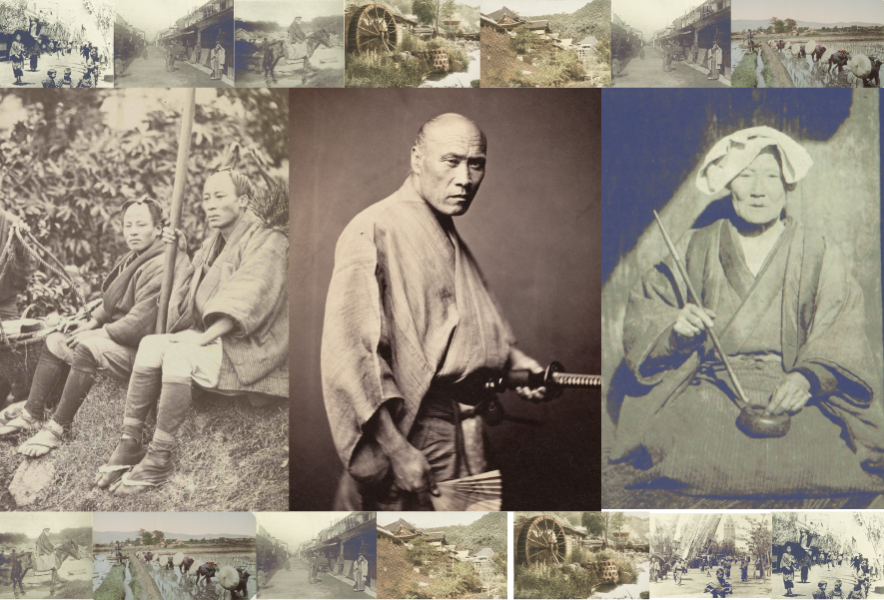About 150 years ago, Japan was one of the most exciting places in the world.
Visitors from overseas were amazed by the Japanese people, and their way of life, and took a lot of pictures with the photographic equipment that was becoming popular at that time.
Many of the photographs taken at the time are still kept in museums of the world.
These are images that show such “scenes of Meiji Japan” photographed by foreigners and these are published as the public domain now.
This episode focuses on the gentlemen who lived in the Meiji era.
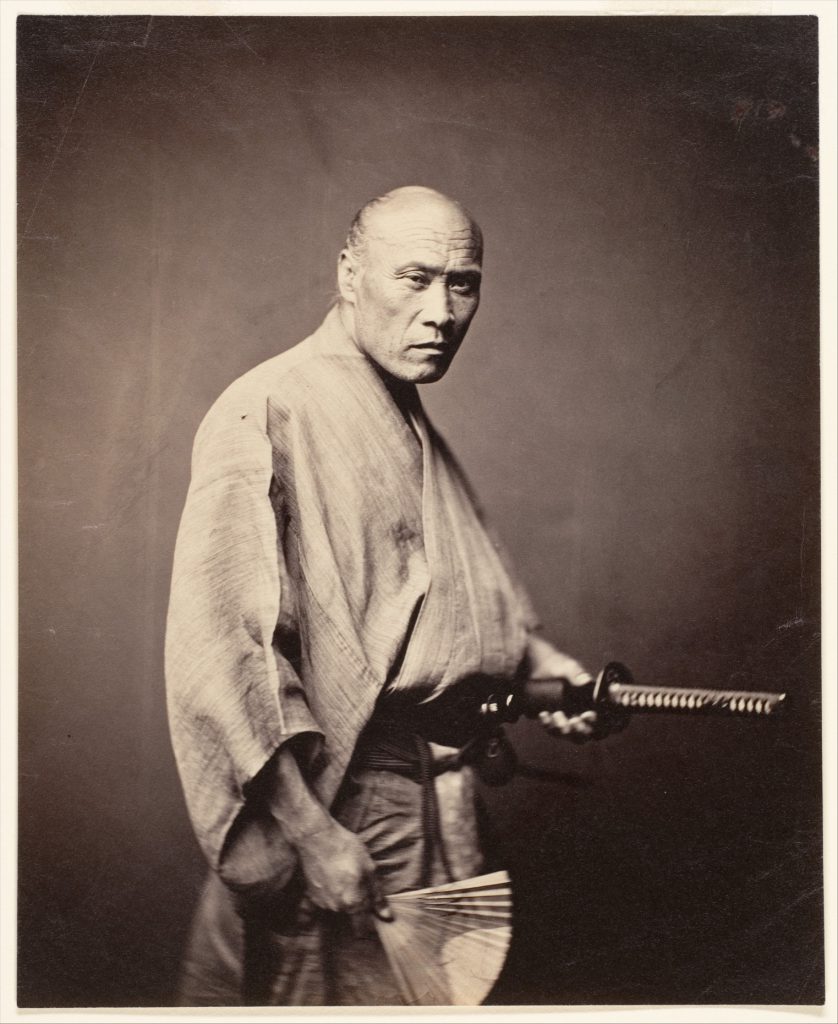
Felice Beato "Samurai, Yokohama"(1864-65/from The Metropolitan Museum of Art)
Beato was an Italian-born photographer. He is famous as one of the early photographers who photographed Asia. He was also a military photographer and photographed the Shimonoseki War in 1864.

Anthonius Franciscus Bauduin "Portraits of a Samurai and of Two Priests" (1862-66/from The Rijksmuseum)
Bodwin was a Dutch-born military doctor who came to Japan in 1862 at the invitation of the Edo shogunate at the urging of his younger brother who was staying on Dejima Island in Japan. He worked to spread Dutch medicine in Tokyo, Osaka, and Nagasaki, and also worked to improve the Japanese educational system after the Meiji Restoration. He loved photography, and although an amateur, he photographed a variety of subjects in various places. The two men in the photo look like father and son.
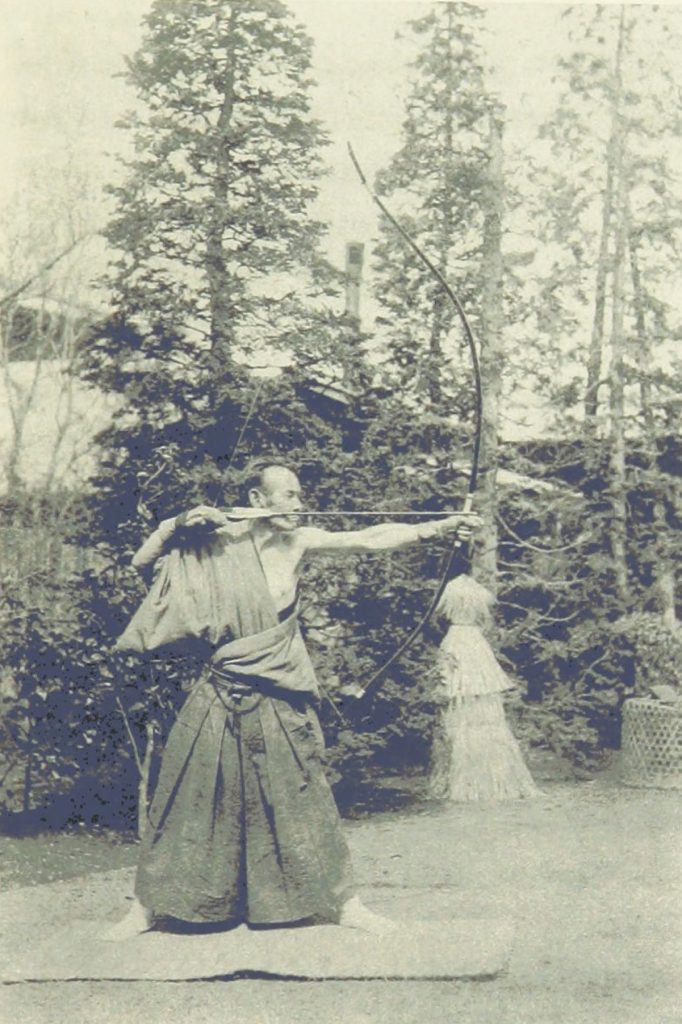
From the book of "Ayame-san"(1890) written by James Murdoch. Photo by William K. Burton. (from The British Library Digital Collection)
Murdoch, a Scottish-born scholar and journalist, was invited to Japan in 1889 to teach European history and English at the First Higher Middle School. The book is a story about a woman named “Ayame” and is illustrated not with novels but with photographs taken in various places at the time. The photographs were taken by William K. Burton, a photographer who was also a childhood friend of his.

Id.
Burton came to Japan in 1887 after meeting Nagai Kyuichiro, father of Nagai Kafu, a diplomat, in Europe. He was also a founding member of Japan’s first photography club, the Nippon Shashin-kai. In the background of this photo is the Ryo-un-kaku building in Asakusa, which was completed in 1890 and for which Burton was involved in the basic design. Below is a selection of Burton’s work from the same book.
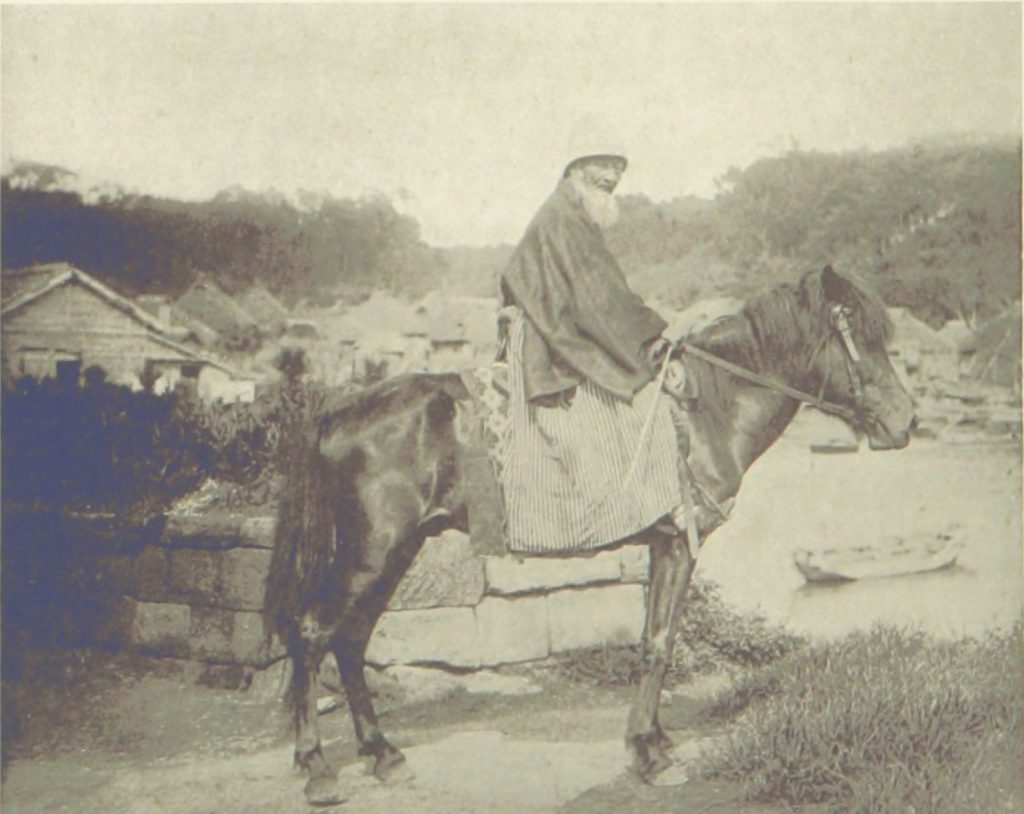
Id.

Id.

Id.
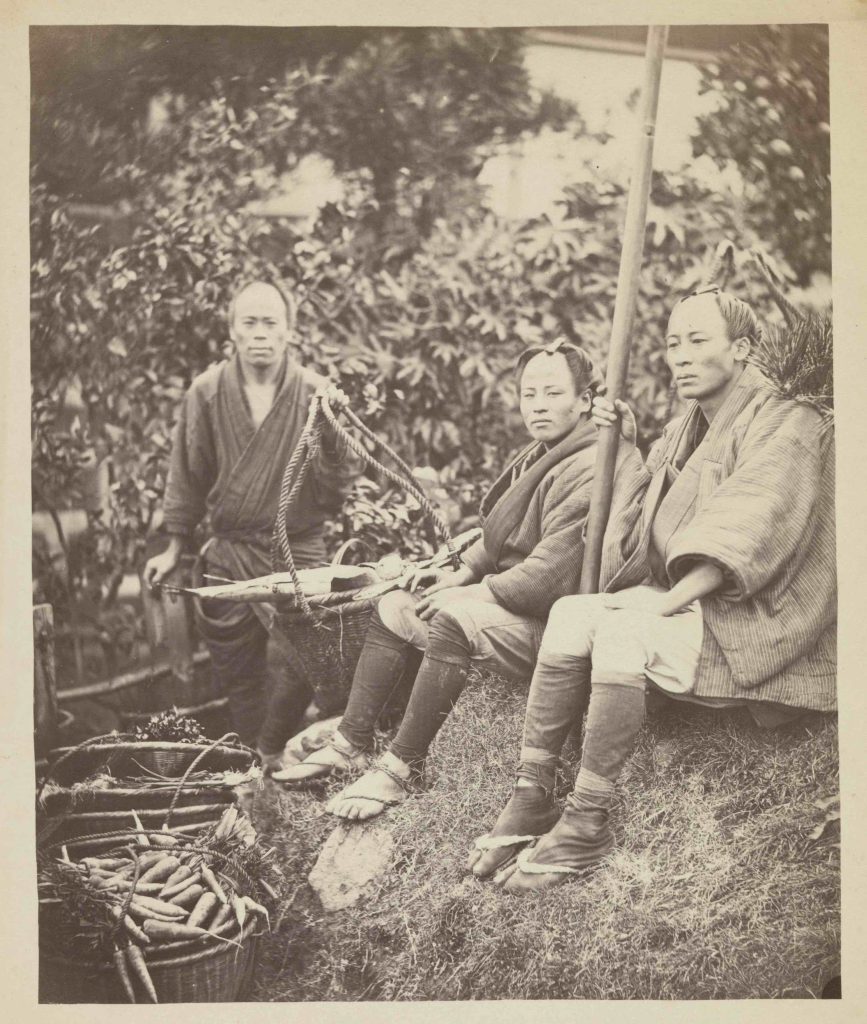
Anthonius Franciscus Bauduin "Portrait of Three Farmers" (1862-66/from The Rijksmuseum)
Here is Baldwin’s work again, probably taken between 1862 and 1866. It clearly shows the atmosphere of people in a farming village in the Edo period. Although the location of the photo is unknown, according to the museum’s explanation, Baudhuin started taking photos as soon as he arrived at Dejima in Nagasaki, so the subjects may be Nagasaki residents. It does not seem as if he had carefully prepared the poses or locations for the photographs, but rather as if he called out to the people on the spot to take them.
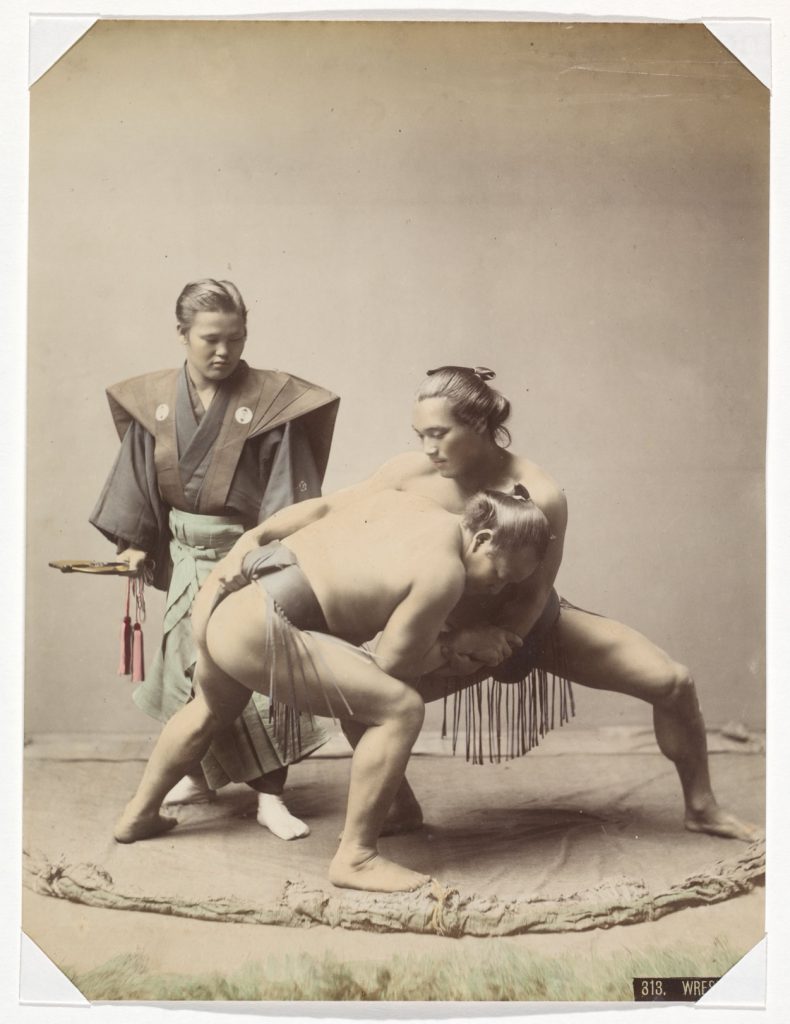
Raimund Freiherr von Stillfried (presumably) "Two Sumo Wrestlers"(1871-1885/from The Rijksmuseum)
At the end of the Edo period, many photographs were taken on glass rather than film. Most of them were apparently “wet plate” photographs, in which a glass plate moistened with a chemical solution was used. These photographs were colored by hand on the resulting black-and-white photographs.
(This article is a reprint from a content of Waraku web with the great cooperation of the website.)

